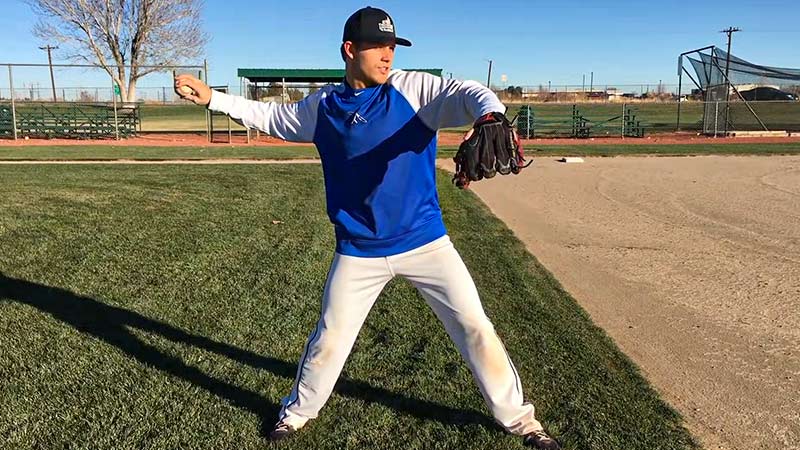In the world of baseball, the concept of the five tools represents a combination of essential skills that define a player’s overall ability on the field.
Hitting, hitting for power, speed, fielding, and throwing are the pillars of a well-rounded player, and mastering these tools is a coveted achievement in the sport.
Well, if you never hear about this fact or just don’t understand it, this blog is for you. Here, we will go through all the factors related to the concept of 5 tools in baseball. So, keep reading till the end.
5 Tools in Baseball
The “5 Tools” in baseball is a term used to describe a set of skills that are highly valued and sought after in players. These tools encompass the fundamental aspects of the game and are considered key indicators of a player’s overall talent and potential.
The 5 Tools in baseball are:
Hitting for Average
Hitting for average in baseball refers to a player’s ability to consistently make contact with the baseball and achieve a high batting average. It is a measure of a player’s ability to get base hits and reach base safely.
To hit for average, a player needs to have good hand-eye coordination, excellent pitch recognition skills, and the ability to adjust their swing based on the type and location of the pitch.
The goal is to make solid contact with the baseball, placing it in play in areas where fielders are less likely to make a play.
Hitters who excel at hitting for average often have a smooth and controlled swing, allowing them to make consistent contact with the ball.
They focus on making solid line drives and well-placed ground balls, which have a higher likelihood of finding gaps or eluding fielders. This approach can lead to a higher number of base hits and a higher batting average.
Hitting for average requires discipline at the plate and the ability to lay off pitches outside the strike zone. Good plate discipline helps hitters get pitches they can handle and avoid swinging at pitches that are difficult to make solid contact with.
Hitters with a high average contribute to their team’s offense by consistently getting on base and creating scoring opportunities. A high batting average is often a reflection of a hitter’s ability to consistently make solid contact and is a valuable skill in baseball.
Hitting for Power
Hitting for power in baseball refers to a player’s ability to generate significant force and drive the baseball with velocity and distance when making contact.
It involves producing hard-hit balls that travel deep into the outfield or over the outfield fences, resulting in extra-base hits such as doubles, triples, and home runs.
Players who excel in hitting for power often possess several key attributes. These include:
Bat Speed
A player with good bat speed can generate quick and explosive swings, allowing them to make solid contact with the baseball and generate more power upon impact.

Strength
Power hitters typically have strong muscles and physical power, enabling them to generate greater force behind their swings. This strength contributes to the ability to hit the ball with more power and drive it farther.
Mechanics
Effective hitting mechanics play a crucial role in maximizing power. This includes proper weight transfer, hip rotation, and hand positioning to generate optimal power and launch the ball with force.
Plate Discipline
While power hitters focus on driving the ball with authority, they must also maintain discipline and select pitches that they can handle. This involves recognizing pitches and zones where they can generate the most power and being patient enough to wait for those opportunities.
Launch Angle
Power hitters often strive to hit the ball at an optimal launch angle that allows for maximum distance. This involves finding the right balance between hitting the ball on a slight upward trajectory to generate lift and hitting it with enough force to clear the outfield fence.
Hitting for power adds a dynamic element to a player’s offensive capabilities. It allows them to produce extra-base hits and drive in runs, putting pressure on the opposing team’s defense and contributing to their team’s scoring efforts.
Power hitters are often relied upon to produce long balls and provide an offensive spark for their team.
Speed
In baseball, speed refers to a player’s ability to move quickly and cover ground efficiently on the field. It is a valuable attribute that can impact both offense and defense.
Here are the key aspects of speed in baseball
Base Running
Speed plays a crucial role in base running. Players with speed can advance bases quickly, steal bases, and take extra bases on hits or errors. They are often a disruptive force on the basepaths, putting pressure on the defense and creating scoring opportunities for their team.
Outfield Defense
Speedy outfielders have the ability to cover more ground and track down fly balls hit into the outfield. Their quickness allows them to make difficult catches and prevent extra-base hits.
Speed in the outfield is particularly valuable when chasing down balls hit into gaps or down the lines.
Infield Defense
Infielders with speed can make quick and agile plays, covering more ground and reaching balls that slower players may not be able to reach.
They are better equipped to handle hard-hit grounders, bunts, and infield choppers. Speed enables them to close the gap between the fielder and the base, making timely throws and turning potential hits into outs.
Stolen Bases
Speedy players are often skilled at stealing bases. They have the ability to get a good jump off the pitcher and quickly reach the next base. Stolen bases put pressure on the defense, disrupt the pitcher’s rhythm, and create scoring opportunities for the offense.
Stretching Hits
When a hitter makes solid contact with the ball, players with speed can turn singles into doubles or doubles into triples by using their quickness to hustle and take advantage of the defense. They can stretch hits by aggressively rounding bases and taking calculated risks.
Speed in baseball is a valuable tool that allows players to cover ground quickly, steal bases, stretch hits, and impact both offensive and defensive aspects of the game.
Speedy players are often game-changers, putting pressure on the opposing team and creating opportunities for success.
Throwing – Arm Strength

Throwing – Arm Strength in baseball refers to a player’s ability to generate power and velocity in their throws. It specifically focuses on the strength and speed of the player’s arm when making throws, whether it’s from the outfield, infield, or on the pitching mound.
Arm strength is crucial in various aspects of the game, including making accurate and strong throws to the intended target, preventing baserunners from advancing, and executing pitches with speed and control.
In terms of fielding, players with exceptional arm strength can make long, accurate throws to the intended base or cutoff man.
This allows them to prevent runners from advancing or making challenging defensive plays, such as throwing out a runner attempting to score or gunning down a baserunner trying to stretch a hit into an extra base.
Outfielders, in particular, rely on arm strength to make strong and precise throws to home plate or cut-off players.
For pitchers, arm strength is vital in generating high velocity on their pitches. A strong throwing arm enables pitchers to deliver fastballs with increased speed and power, making it more challenging for batters to make solid contact.
The ability to throw with velocity also enhances the effectiveness of breaking balls and off-speed pitches by creating greater differentiation in pitch speed.
To develop arm strength, baseball players engage in specific exercises and training routines focused on strengthening the muscles involved in the throwing motion.
Fielding Ability
Fielding ability in baseball refers to a player’s skill and proficiency in fielding defensive plays. It encompasses the player’s ability to effectively field ground balls, catch fly balls, make accurate throws, and execute defensive plays with precision.
Strong fielding ability is crucial for a player’s success on the field and is a fundamental aspect of the game. Fielding ability requires a combination of physical and mental skills. Some key elements of fielding ability include:
Instincts and Anticipation
Fielders with strong instincts have a natural ability to read the trajectory of the ball off the bat, anticipate where it will go, and position themselves accordingly. Anticipation allows fielders to react quickly, get into the proper fielding position, and make plays more efficient.
Quick Reflexes
Fielders need to have quick reactions to quickly move and adjust to the path of the ball. This allows them to get in position to make the play and field the ball cleanly.
Soft Hands
Soft hands refer to a fielder’s ability to receive and control the ball smoothly and without unnecessary jarring or bobbles. Soft hands enable fielders to make clean catches and transfers, reducing the chances of errors.
Range and Agility
Fielders with good range and agility have the ability to cover a larger area of the field, allowing them to reach and field balls that may be hit far from their starting position. Range and agility are especially important for outfielders who need to cover a large outfield territory.
Arm Strength and Accuracy
Fielders need to have the arm strength to make strong and accurate throws to the appropriate target. This is important for both infielders making throws across the diamond and outfielders making long throws to bases or home plate.
Footwork
Proper footwork is essential for fielders to position themselves correctly, react quickly, and generate power for accurate throws. Good footwork allows fielders to move efficiently and maintain balance while fielding.
Fielding ability plays a critical role in preventing hits, turning double plays, making crucial outs, and overall defensive performance. Strong fielders can save runs, limit baserunners, and have a significant impact on the outcome of a game.
Examples of Baseball Players With Exceptional Skills in Each Tool
| Tool | Example Player |
| Hitting | Ted Williams |
| Hitting for Power | Babe Ruth |
| Speed | Rickey Henderson |
| Fielding | Ozzie Smith |
| Throwing | Roberto Clemente |
FAQs
Are there any players who have mastered all five tools in baseball?
While there have been players who excel in multiple tools, it is extremely rare to find a player who has mastered all five tools at the highest level. Some players may possess a combination of four or even three tools, but a true five-tool player is considered a rarity in the game.
Can a player develop and improve their skills in the five tools?
Yes, players can develop and improve their skills in the five tools through dedicated training, practice, and experience. While certain tools may be more innate and difficult to enhance significantly, players can work on refining their hitting, power, speed, fielding, and throwing abilities through proper coaching, conditioning, and repetition.
Do all positions in baseball require proficiency in all five tools?
Not all positions in baseball require the same level of proficiency in all five tools. For example, a pitcher’s primary focus is on pitching skills rather than hitting or baserunning. However, regardless of position, having a solid foundation in the five tools can benefit players in various aspects of the game and contribute to their overall success and versatility.
Are the five tools the only factors that determine a player’s success in baseball?
While the five tools are essential aspects of a player’s skill set, they are not the sole determinants of success in baseball. Other factors, such as mental toughness, baseball IQ, situational awareness, and teamwork, also play significant roles in a player’s overall performance and impact on the game.
Conclusion
The five tools in baseball encompass hitting, hitting for power, speed, fielding, and throwing. These skills are crucial for players to excel at the highest level of the game.
While it is rare to find a player who possesses mastery in all five tools, those who do become legends of the sport. The pursuit of these skills continues to captivate fans and shape the game of baseball.
I am sure that you have understood the entire fact very well/. Still, if you have more confusion left, please let us know. Thanks a million times for your support.







